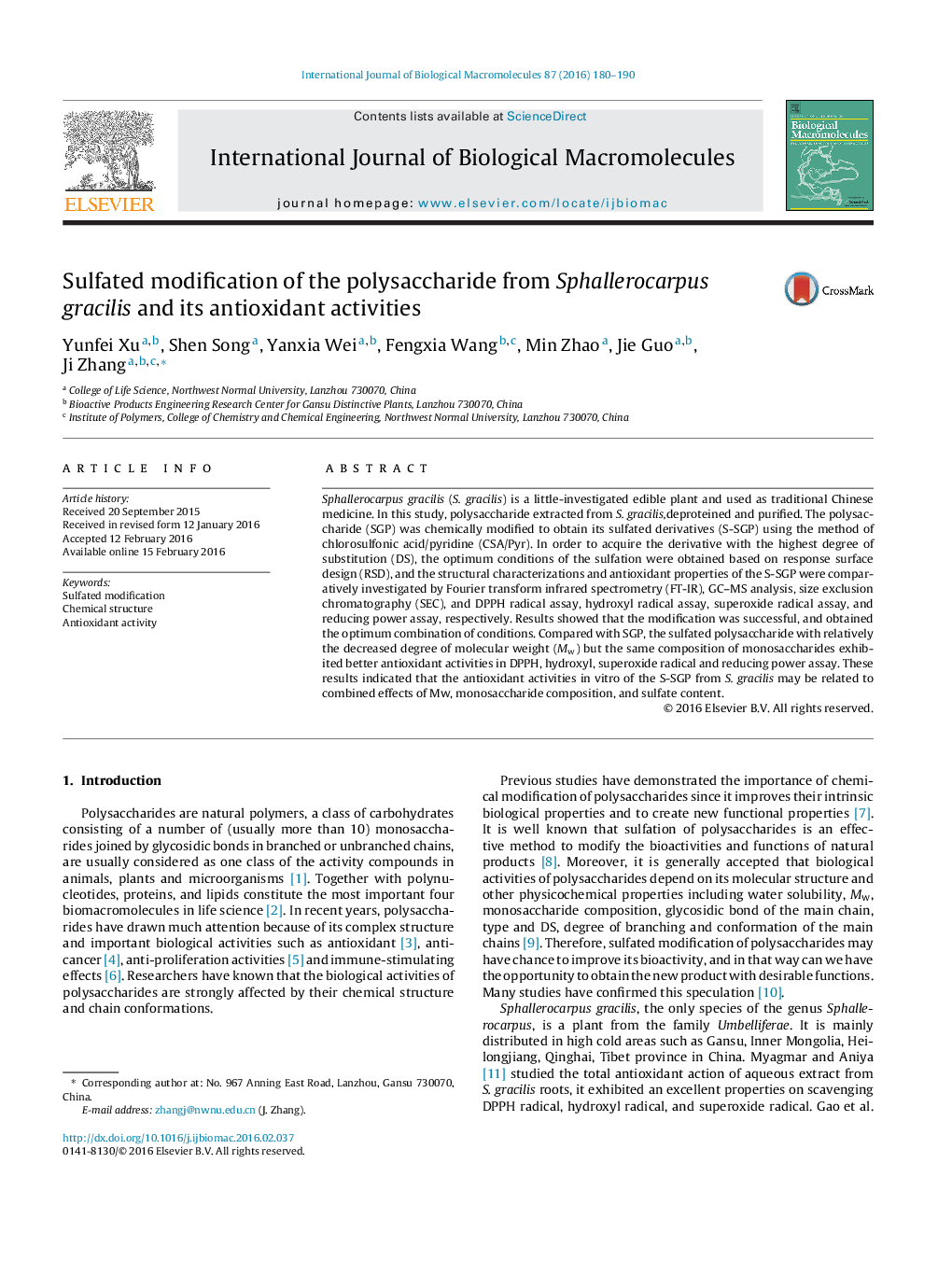| Article ID | Journal | Published Year | Pages | File Type |
|---|---|---|---|---|
| 1986190 | International Journal of Biological Macromolecules | 2016 | 11 Pages |
•SGP from Sphallerocarpus gracilis was first modified and obtained the sulfated polysaccharide (S-SGP) using the response surface method.•The structure and antioxidant activities of S-SGP were first studied, and compared with the natural one.•Indicated that sulfate modification of SGP may have an important value to obtain new antioxidant and deserved to have a further study on it.
Sphallerocarpus gracilis (S. gracilis) is a little-investigated edible plant and used as traditional Chinese medicine. In this study, polysaccharide extracted from S. gracilis,deproteined and purified. The polysaccharide (SGP) was chemically modified to obtain its sulfated derivatives (S-SGP) using the method of chlorosulfonic acid/pyridine (CSA/Pyr). In order to acquire the derivative with the highest degree of substitution (DS), the optimum conditions of the sulfation were obtained based on response surface design (RSD), and the structural characterizations and antioxidant properties of the S-SGP were comparatively investigated by Fourier transform infrared spectrometry (FT-IR), GC–MS analysis, size exclusion chromatography (SEC), and DPPH radical assay, hydroxyl radical assay, superoxide radical assay, and reducing power assay, respectively. Results showed that the modification was successful, and obtained the optimum combination of conditions. Compared with SGP, the sulfated polysaccharide with relatively the decreased degree of molecular weight (Mw) but the same composition of monosaccharides exhibited better antioxidant activities in DPPH, hydroxyl, superoxide radical and reducing power assay. These results indicated that the antioxidant activities in vitro of the S-SGP from S. gracilis may be related to combined effects of Mw, monosaccharide composition, and sulfate content.
